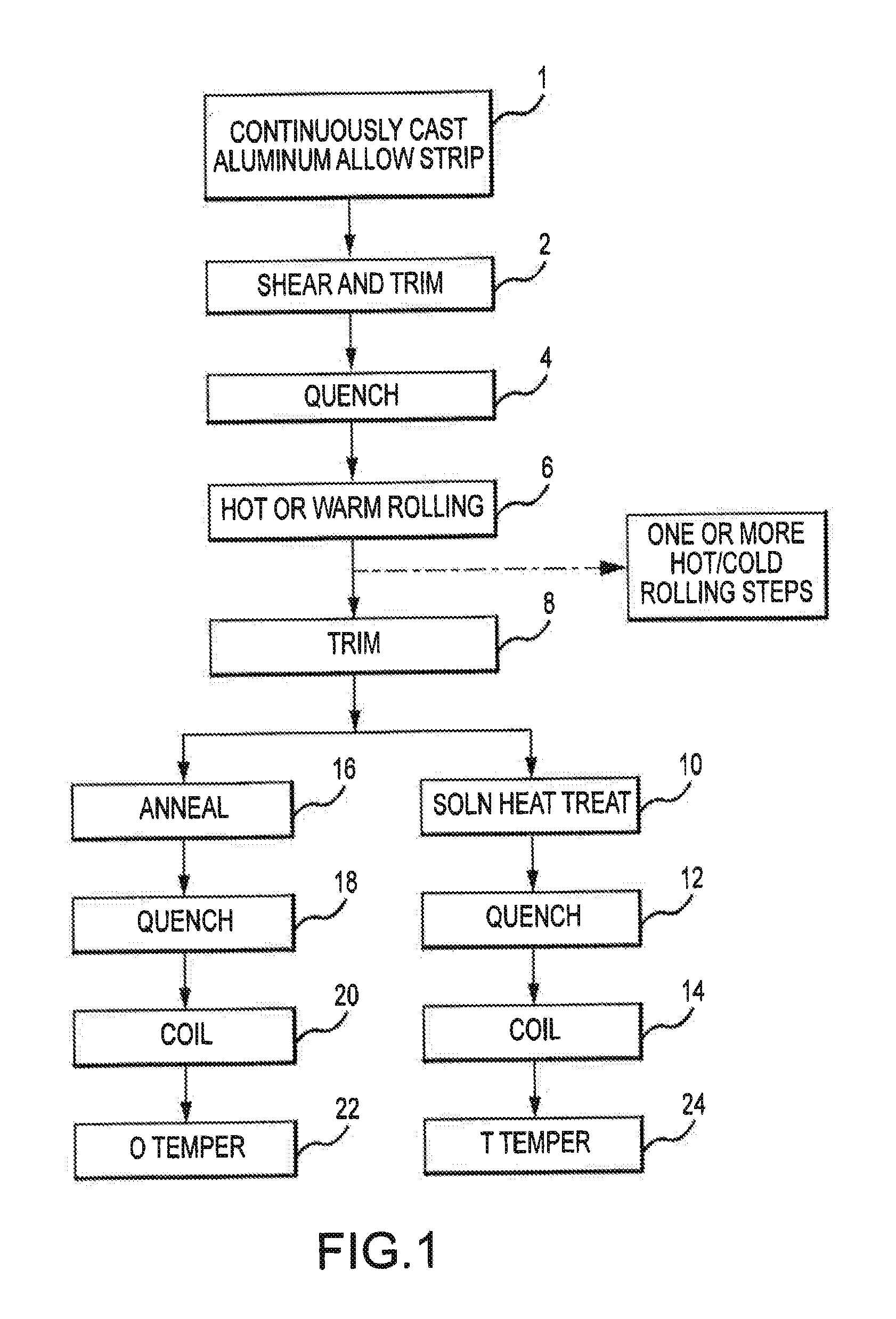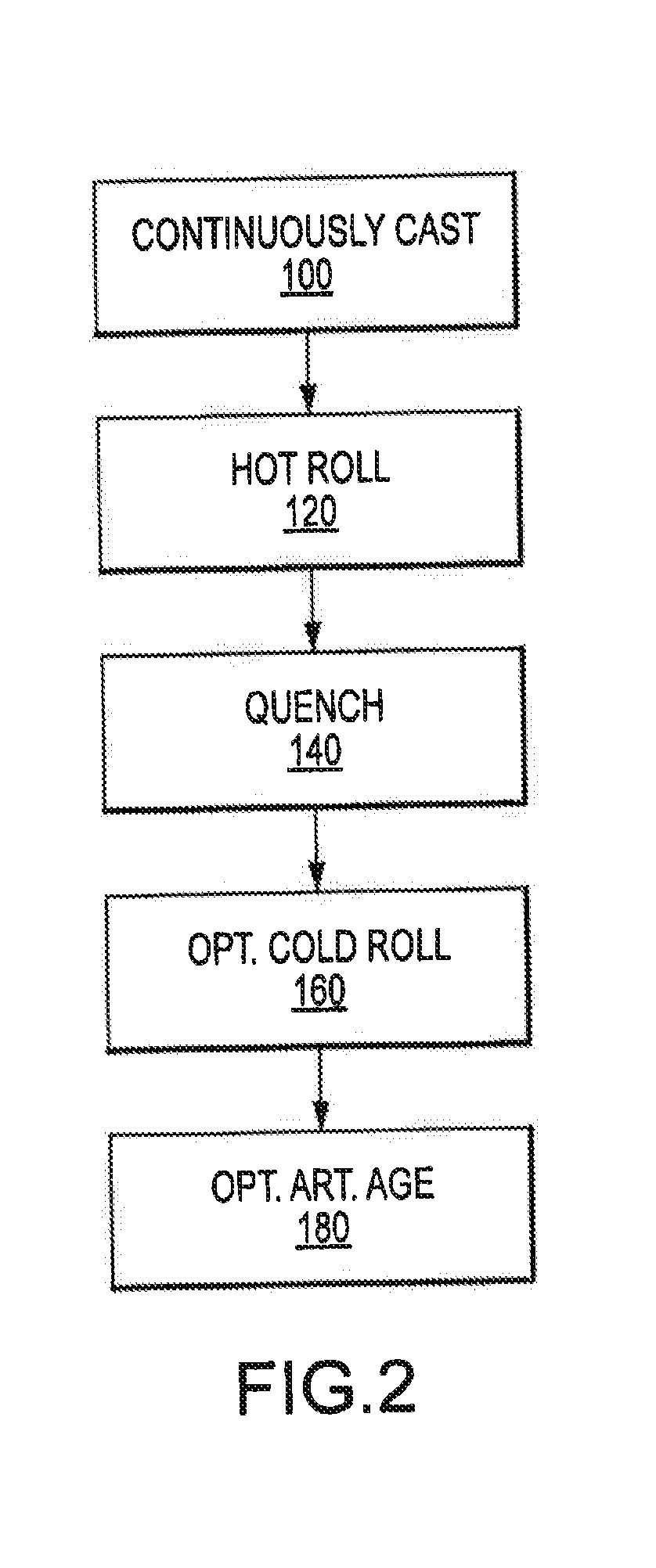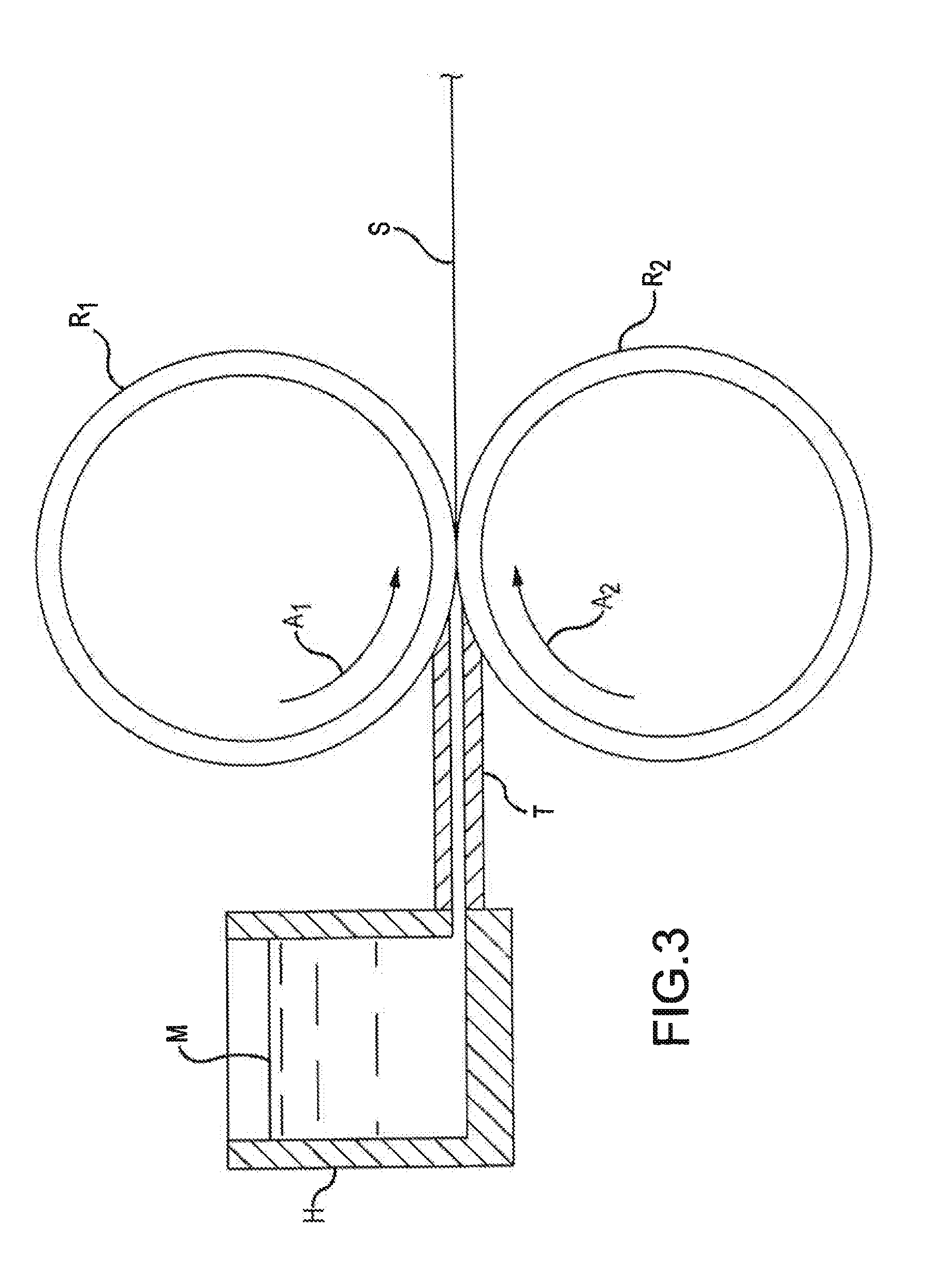Aluminum alloys and methods for producing the same
a technology of aluminum alloys and alloy strips, applied in packaging foodstuffs, packaging goods types, transportation and packaging, etc., can solve the problems of affecting the properties of continuously cast heat treatable aluminum alloys, and achieve the effects of avoiding non-uniformity problems, reducing the change of cast aluminum alloys, and improving the properties of strips
- Summary
- Abstract
- Description
- Claims
- Application Information
AI Technical Summary
Benefits of technology
Problems solved by technology
Method used
Image
Examples
example 1
[0112]A heat treatable aluminum alloy having the composition in Table 1, below, is continuously cast, then hot rolled, then quenched, and then artificially aged in accordance with the new processes described herein.
TABLE 1Composition of Ex. 1 Alloy (in wt. %)SiFeCuMnMgCrZnTiZr0.440.210.350.391.480.0790.0050.020
The remainder of the aluminum alloy was aluminum and other elements, where the aluminum alloy included not greater than 0.03 wt. % each of other elements, and where the total of these other elements not exceeding 0.10 wt. %. That same alloy is also continuously cast, then hot rolled, then quenched, and then solution heat treated (for 0.5 hours and also 8 hours), then quenched and then artificially aged. As shown in FIG. 8, the new process having no separate solution heat treatment step results in higher tensile yield strengths (about 10% higher) and with peak strength being reached sooner.
example 2
[0113]Three heat treatable aluminum alloys were continuously cast, then hot rolled, then quenched, and then artificially aged in accordance with the new processes described herein. The compositions of these alloys are provided in Table 2, below.
TABLE 2Composition of Ex. 2 Alloys (in wt. %)AlloySiFeCuMnMgZnTiA0.290.260.201.080.810.040.017B0.290.690.200.730.800.010.015C0.490.490.410.891.10.010.034
The remainder of these aluminum alloys was aluminum and other elements, where the aluminum alloys included not greater than 0.03 wt. % each of other elements, and where the total of these other elements not exceeding 0.10 wt. %.
[0114]These same alloys were also continuously cast, then hot rolled, then quenched, and then solution heat treated (for 2 hours), then quenched and then artificially aged. As shown in FIG. 9, the new process having no separate solution heat treatment step results in higher yield strengths and with peak strength being reached sooner. The new heat treatable aluminum all...
example 3
[0115]Several heat treatable aluminum alloys were continuous cast to a thickness of about 0.100 inch. The alloys compositions are provided in Table 3, below.
TABLE 2Composition of Ex. 3 Alloys (in wt. %)AlloySiFeCuMnMgTiZr10.390.280.390.730.770.037—20.200.270.420.720.800.035—30.390.280.200.741.180.032—40.220.290.280.760.810.023—50.410.290.420.301.170.025—60.210.280.210.681.190.024—70.200.270.430.310.800.024—80.200.270.210.311.200.020—90.380.260.210.300.790.018—100.410.270.420.781.190.022—110.220.280.450.291.210.013—120.300.270.310.490.990.031—130.300.210.310.511.010.027—140.300.360.300.500.990.026—150.300.590.310.520.990.029—160.300.281.471.511.480.0290.11170.390.301.470.971.500.0210.11
The remainder of these aluminum alloys was aluminum and other elements, where the aluminum alloys included not greater than 0.03 wt. % each of other elements, and where the total of these other elements not exceeding 0.10 wt. %.
[0116]After continuously casting the alloys were immediately quenched as th...
PUM
| Property | Measurement | Unit |
|---|---|---|
| thickness | aaaaa | aaaaa |
| thickness | aaaaa | aaaaa |
| temperature | aaaaa | aaaaa |
Abstract
Description
Claims
Application Information
 Login to View More
Login to View More - R&D
- Intellectual Property
- Life Sciences
- Materials
- Tech Scout
- Unparalleled Data Quality
- Higher Quality Content
- 60% Fewer Hallucinations
Browse by: Latest US Patents, China's latest patents, Technical Efficacy Thesaurus, Application Domain, Technology Topic, Popular Technical Reports.
© 2025 PatSnap. All rights reserved.Legal|Privacy policy|Modern Slavery Act Transparency Statement|Sitemap|About US| Contact US: help@patsnap.com



